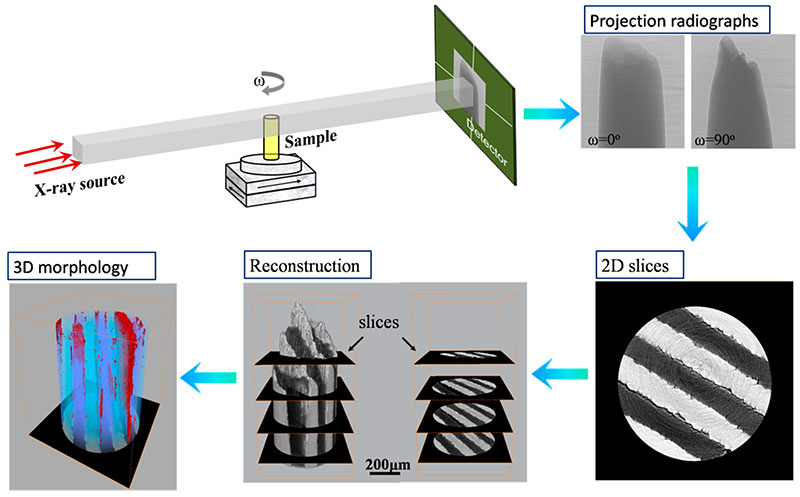The reign of the dinosaurs ended in spring Understand article
The asteroid that killed the dinosaurs struck Earth during springtime. Scientists have determined this by analyzing the remains of fish that died directly after the impact.
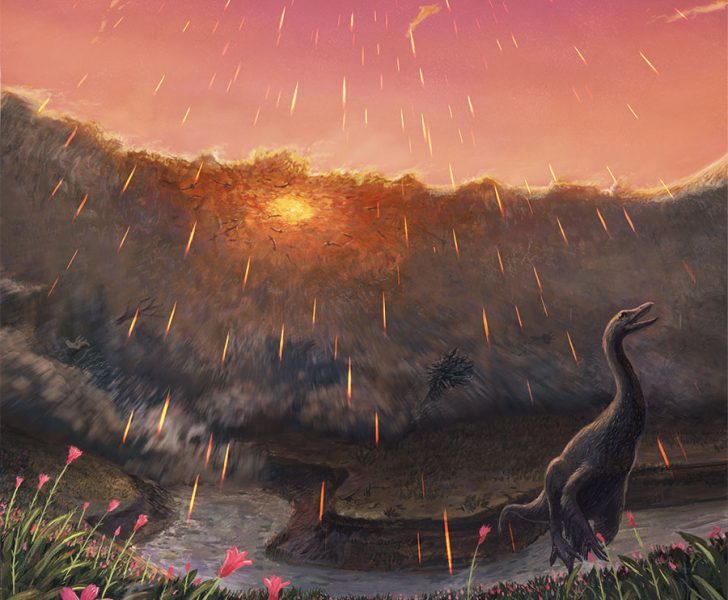
© Paleoart by Joschua Knüpe, based on research and commissioned by Melanie During
Around 66 million years ago, the Chicxulub meteorite crashed into the Earth, in what today is the Yucatán peninsula in Mexico, marking the demise of dinosaurs and end of the Cretaceous period. This mass extinction still puzzles scientists today, as it was one of the most selective in the history of life: all non-avian dinosaurs, pterosaurs, ammonites, and most marine reptiles disappeared, whilst mammals, birds, crocodiles, and turtles survived.
A team of scientists from the Vrije Universiteit, Uppsala University, and the European Synchrotron Radiation Facility (ESRF) have now shed light on the circumstances surrounding the diverse extinction across the different groups.[2] The answers came from the bones of fish that died moments after the meteorite struck.
When the meteorite impacted Earth, it rocked the continental plate and caused huge standing waves in the overlying water bodies. These mobilized enormous volumes of sediment that engulfed fish and buried them alive, while impact spherules (glass beads of Earth rock) rained down from the sky less than an hour after impact. Today, the event deposit of Tanis in North Dakota (United States) preserves a fossilized ecosystem that includes paddlefishes and sturgeons, which were direct casualties of the event.
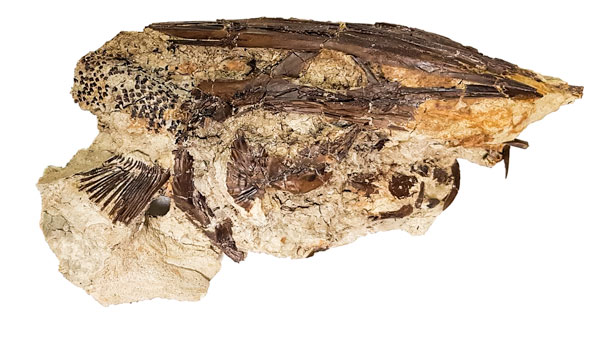
Image courtesy of Melanie During
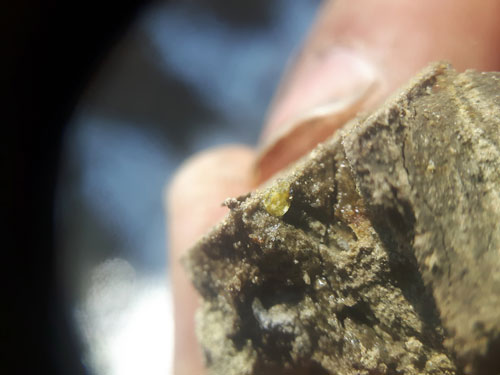
Image courtesy of Melanie During
The fish fossils were exceptionally preserved, with their bones showing almost no signs of geochemical alteration. Melanie During, a researcher from Uppsala University and the VU Amsterdam and lead author of the publication, went onsite to excavate the precious specimens. “It was obvious to us that we needed to analyze these bones to get valuable information about the moment of the impact,” she explains.
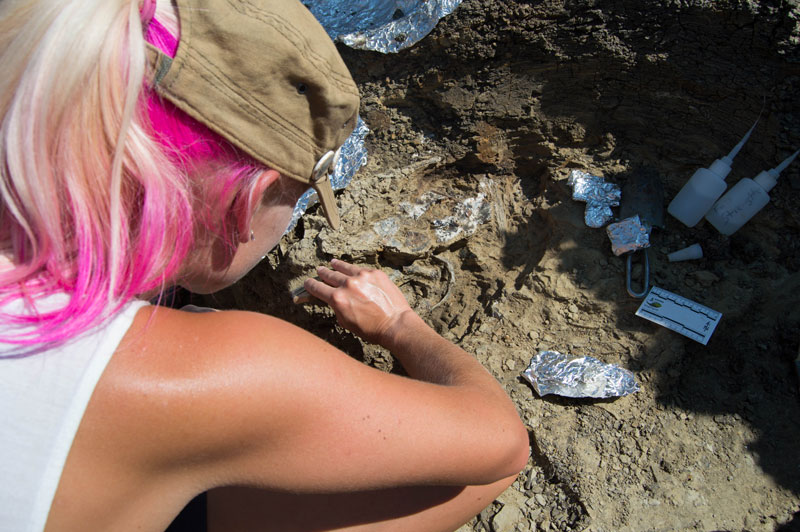
© Jackson Leibach
The team came to the ESRF, a particle accelerator that produces the world’s brightest X-rays, with a partial fish specimen and representative sections of the bones, and carried out high-resolution synchrotron X-ray tomography.
Synchrotron X-ray tomography
Computed tomography (CT) refers to a technique of visualizing an object in three dimensions without having to cut it open or otherwise destroy it. This is achieved by doing a series of 2D scans while the specimen rotates and a computer algorithm is used to turn them into cross-sectional ‘slices’ that can be stacked together to give a 3D model. This is the basis for medical CT scans. A series of X-ray scans are taken from different angles and then computationally re-constructed to give doctors a 3D picture of the internal structures of the body without surgery.
In this study, the scientists used a variation on this technique that uses very bright X-rays from synchrotron sources like the European Synchrotron Radiation Facility (ESRF). These high-energy synchrotron X-rays penetrate even very thick materials like fossils non-destructively and their high intensity improves the signal-to-noise ratio and spatial resolution to give high-quality images in microscopic detail.
The ESRF is the perfect tool to research these kinds of samples, and the facility has developed unique expertise in palaeontology over the last two decades. “Thanks to the ESRF’s data, we found that the bones registered seasonal growth, very much like trees, growing a new layer every year on the outside of the bone,” explains Sophie Sanchez of Uppsala University, and visiting scientist at the ESRF. “The retrieved growth rings not only captured the life histories of the fishes but also recorded the latest Cretaceous seasonality and thus the season in which the catastrophic extinction occurred,” states senior author Jeroen van der Lubbe of the VU in Amsterdam.
The X-ray scans also showed the distribution, shapes and sizes of the bone cells, which are known to fluctuate with the seasons. “In all studied fishes, bone cell density and volumes can be traced over multiple years and they indicate whether it was spring, summer, autumn, or winter. We saw that both cell density and volumes were on the rise but had not yet peaked during the year of death, which implies that growth abruptly stopped in spring,” says Dennis Voeten, researcher at Uppsala University.
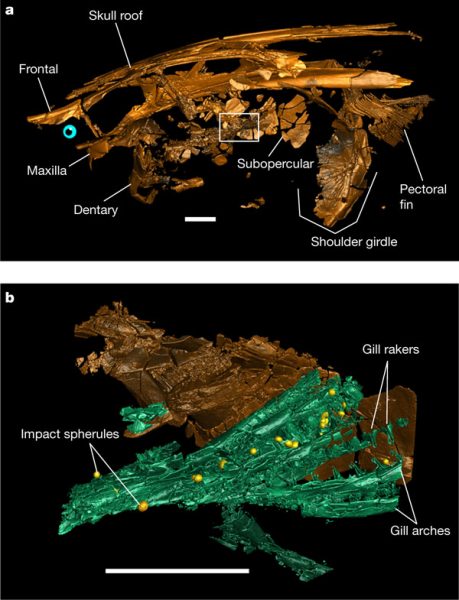
Image from Ref. [2], CC BY 4.0
In parallel to synchrotron radiation studies, the team carried out stable carbon isotope analysis to reveal the annual feeding pattern of a fish. The availability of zooplankton, its prey of choice, oscillated seasonally and peaked in summer. This temporary increase of ingested zooplankton enriched the skeleton of the fish with the heavier 13C carbon isotope relative to the lighter 12C carbon isotope. “The carbon isotope signal across the growth record of this unfortunate paddlefish confirms that the feeding season had not yet climaxed – death came in spring,” asserts During.
Watch a video in which Melanie During directly explains her research.
© Uppsala University
The findings will aid future research into the selectivity of the mass extinction: in the Northern Hemisphere it was spring and therefore the reproduction cycles of organisms were starting, only to be abruptly stopped. Meanwhile, it was autumn in the Southern Hemisphere, where many organisms were likely preparing for winter. In general, it is well understood that organisms that were exposed died virtually immediately. So those sheltering in caves or burrows because they were hibernating were far more likely to survive into the Paleogene. “Our results will help to uncover why most of the dinosaurs died out while birds and early mammals managed to evade extinction,” concludes During.
References
[1] The original article on the ESRF News website: https://www.esrf.fr/home/news/general/content-news/general/the-reign-of-the-dinosaurs-ended-in-spring.html
[2] During MAD et al. (2022) The Mesozoic terminated in boreal spring. Nature 603: 91–94. doi: 10.1038/s41586-022-04446-1
[3] Xu C et al. (2019) 3D Visualized Characterization of Fracture Behavior of Structural Metals Using Synchrotron Radiation Computed Microtomography. Quantum Beam Sci. 3: 5. doi: 10.3390/qubs3010005
Resources
- Watch a short video for a basic understanding of computer tomography.
- Read a paper about Synchrotron-based X-ray Tomographic Microscopy.
- A study at the ESRF revealed how early mammals used to live: ESRF (2021) Ancient tiny teeth reveal first mammals lived more like reptiles. Science in School 51.
- Using X-rays at the ESRF to look at art pieces:
- Brown A (2011) Van Gogh’s darkening legacy. Science in School 19: 19–25.
- Capellas Espuny M (2019) Art and science from Pompeii to Rembrandt. Science in School 48: 20–22.
- Unlocking the secrets of photosynthesis with X-ray free electrons at the European XFEL: Wilson R (2021) Plant solar power: unlocking the secrets of photosynthesis with X-ray free-electron lasers. Science in School 54.
- Find out about a technique based on the photoacoustic effect that can make medical imaging less dangerous: Czuchnowski J, Prevedel R (2019) Photoacoustics: seeing with sound. Science in School 47: 14–18.

